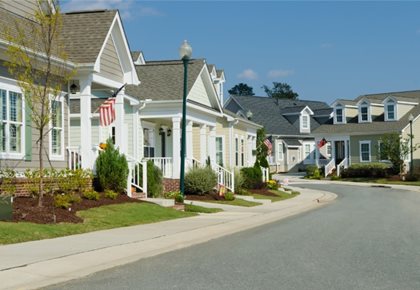Thursday August 25, 2016
 If you’re a Board member, chances are that you have a pretty good idea of what the future holds for your association – more than likely because you were part of that planning process. But what about the issues that pop up and are out of your control? How will you address them when they arise? And what type of influence will they have on the strategies you and your fellow Board members have developed to ensure your community is a great place to live?
If you’re a Board member, chances are that you have a pretty good idea of what the future holds for your association – more than likely because you were part of that planning process. But what about the issues that pop up and are out of your control? How will you address them when they arise? And what type of influence will they have on the strategies you and your fellow Board members have developed to ensure your community is a great place to live?Community Association Institute, a leading trade organization, conducted a panel discussion featuring industry professionals and stakeholders to address these very questions. Their findings were published in CAI’s publication, Common Ground. We have paired those findings with some insight from our industry experts to give you a list of factors that will shape association living in the next two decades.
“The next two decades promise to be a time of transformation for our industry and for association living in general,” said Edwin Lugo, vice president of FirstService Residential. “By developing strategies for addressing these issues now, we can preserve the association model as the standard for maintaining quality lifestyles.”
Let’s take a look at where the coming decades will take us.
1. Education is key.
In the next two decades, it will be crucial for Board members to understand that partnering with a great property management company adds value and has a purpose. Association Boards will continue to look for those management companies that have bulk buying power as a result of a national presence, as well as those that can offer proven vendors who can be trusted to make the necessary upgrades that aging communities will need.The concept of green living will also become a priority for both Boards and residents. In order to address these concerns, a working knowledge of policy, technology and much more is required. Both Boards and the property management companies they hire will need to ensure that they have the appropriate knowledge to adapt to the changing needs of their residents. Boards will also be responsible for conveying the importance of energy efficiency and water conservation strategies.
2. Changing demographics.
In the coming years, Millennials will be buying the majority of association homes. This generation, born between 1980 and 2000, is known for having a worldview that is significantly different than the generations that came before them. And because they outnumber Gen Xers and Baby Boomers, they could represent a major purchasing block once they reach their prime home-buying years. Another thing to keep in mind is that this generation of people grew up in the digital age, so associations will need to prepare themselves to provide technical solutions for activities such as voting. Leveraging social media to communicate instead of standard newsletters and the like will also be essential.As older generations continue to age, associations will also need to accommodate older residents and adjust their amenities and lifestyle programs accordingly. Diversity will also continue to come into play, so smart associations will remain mindful of communicating in different language and across cultures.
3. Telling the story.
In the coming years, Boards, property management companies, and residents will need to become more adept at communicating the benefits of association living. For members of the Board, that begins at home. Properly maintained common areas and amenities will always speak louder than words, as does robust lifestyle programming that builds a true sense of community. And all of these efforts are made that much stronger with a continued focus on good financial stewardship.The good news is that, according to the Foundation for Community Association Research, momentum is working in favor of associations. The following stats were derived from a survey of association residents they recently conducted:
- 90% of association residents say Board members are operating with the best interest of the community in mind
- 70% believe the association’s rules improve their property values
- 92% say they are on friendly terms with members of their Board
- 64% say their relationship with their association was “positive”
- 83% reported that they get along with their closest neighbor
4. Working together.
In order to strengthen common-interest communities, you must create stronger relationships between associations and stakeholders. That includes developers, who must understand the value of creating an association early in the development process, and real estate agents, who should be able to clearly communicate the value of living in an association to prospective buyers. Establishing good relationships with mortgage lenders and organizations like AARP will be essential too.The next two decades promise to be a time of exciting progress and change. The key is to see these changes as opportunities, not obstacles. Consider these four factors when planning for the future, and you’ll be ready for whatever comes your association’s way. For more on navigating the future of association living, contact FirstService Residential today.